The world of rangefinding binoculars has changed. Are you still sacrificing optical quality to have a two-in-one? This Sig Kilo 6K review comes on the heels of our monster rangefinder binocular review, where we had the unique opportunity to put a majority of the rangefinding binoculars on the market side by side, test them for optical performance and rangefinder performance, and try to parse out the vast number of variables and configurations.
One of the rangefinder binoculars we tested in that review was the Sig Kilo 6K HD Compact binocular compact rangefinder binoculars. Another pair we tested in that larger lineup was the Sig Kilo 10K ABS rangefinder binoculars, so we decided to compare these two powerhouse units to help you decide which might best fit your needs.
Because rangefinding binoculars bring a whole new level of complexity to your optical system, there are a lot of factors at play when considering picking some up. These are powerful units that offer you a TON of options, configurations, and data all in a compact package.
Love optics? Here at Backwoods Pursuit we certainly do! Make sure to check out our MONSTER 26 BINOCULAR REVIEW, as well as our massive 19 SPOTTING SCOPE REVIEW. For both of those reviews, we lined up the optics and tested them side by side!
Want to see how these ones stacked up against 10 other rangefinder binoculars? Check out our MONSTER RANGEFINDER BINOCULAR REVIEW as well as the Backwoods Pursuit YouTube Channel.
Best Uses: Sig Kilo 6K Review
The Sig Kilo 6K HD Compact binocular is the smaller, lighter weight version of the Sig Kilo 10K, giving you similar rangefinder performance but also very different operational functionality. The Kilo 6K Compact comes in either 8×32 or 10×32, which will obviously be a more compact and lightweight option than the Sig Kilo 10K which is a 10×42 model.
Because of the compact size, dedicated archery mode, and integrated Applied Ballistics Ultralight, the Sig Kilo 6K HD will appeal to archery hunters who also like to dabble in some long range shooting. Or, even if you do not shoot long range, having your ballistic calculation displayed within your rangefinder unit is a nice bonus to have regardless of distance.
FOR THE ARCHERY HUNTER:
What makes this little Kilo 6K HD Compact so amazing is that it has a dedicated archery mode, where you enter your specific arrow speed into the unit and it uses that arrow speed as part of the calculation for the adjusted range on shots that involve an incline or decline. Because your arrow speed can affect the point of impact on an angle-compensated range, the Kilo 6K provides enhanced precision for challenging angled shots.
FOR THE RIFLE HUNTER:
The Sig Sauer Kilo 6K is a powerhouse rangefinding binocular that features Applied Ballistics Ultralight, which will spit out a ballistic solution to 800 yards, all while taking into account atmospheric conditions using its onboard environmental sensors.
The Kilo 6K is specifically designed with the long range shooter in mind. Why? Sig Sauer’s BDX 2.0 makes this one of the most advanced rangefinders on the market. The integrated Applied Ballistics Ultralight (BDX-U) and Applied Ballistics External (BDX-External) allow you to either use the Sig Sauer App to customize your rifle profile (BDX-U), or you can use an external device (e.g., Kestrel, etc.) for your ballistic solution if you have a favorite that you want to keep using.
The Sig Kilo 6K uses bluetooth connectivity to connect to your phone and transfer data back and forth which is very usable for most hunting situations.
Finally, with the laser rangefinder in the Sig Kilo 6K HD rangefinding binoculars you can even drop a waypoint using the Earthmate App. This unit is absolutely PACKED with features no matter if you are a competition long range shooter, weekend warrior who casually shoots your rifle a few days before season, or dedicated bowhunter who wants an archery-specific rangefinder.
The Specs: Sig Kilo 6K Review
Rangefinding binoculars have come a long way in recent years, not just in performance but also in design and compactness. The Sig Sauer Kilo 6K rangefinding binoculars are incredibly small and compact, and it is hard to tell they are a rangefinder binocular even when you see the buttons on the top of the unit.
This compact rangefinder binocular astoundingly came in at the #2 spot in our big rangefinding binocular review. They were able to quickly and regularly range non-reflective targets out to an incredible 3,250 yards. They offer some of the best rangefinding performance that we have tested and blew away the competition for a compact rangefinder binocular. Truly incredible!
| Feature | Sig Kilo 6K HD Compact |
|---|---|
| Weight | 26.1 oz |
| Length | 5.7 in |
| Armor Coating | Rubber |
| Eye Relief | 15.5 mm |
| Eyecups | 4 Position Twist-up |
| Diopter/Reticle Focus | Non-Locking |
| Tripod Threaded | Yes |
| Field of View | 330 ft @ 1000 yds |
| Max Range | 6,000 yds |
| Applied Ballistics | Yes – Ultralight |
| Drop Waypoint | Yes |
| Bluetooth Connectivity | Yes |
| Archery Mode | Yes |
| Tripod Adaptable | Yes – Threaded |
| Waterproof | Yes – IPX-4 |
The Eyecups: Sig Kilo 6K Review
I found the eyecups on the Sig Kilo 6K Rangefinder binoculars to be more comfortable and fit my eye sockets better than the Kilo 10K. While the Kilo 6Ks do not have quite as much eye relief, I much preferred its eyecups over the Kilo 10K eyecups because I was able to roll them all the way out and surprisingly still get a full field of view.
I noticed a little bit of play in each eyecup position. It was far from being an issue, and the eyecups offer enough resistance to stay where you leave them, but it is present.
Tripod Adaptability: Sig Kilo 6K Review
Rangefinding binoculars require a battery to power the electronics, and most companies house that battery forward of the hinge, occupying the space where a threaded adapter insert is found on traditional binoculars. Fortunately, Sig Sauer put the Kilo 6K battery compartment down by the electronics in the barrel which freed up that space. I like this design as the battery compartment does not get in the way whatsoever.
With a traditional threaded insert, I was ecstatic to be able to use some of my personal favorite adapters like the Swarovski SLC-TA, Outdoorsmans tripod adapter, and Zeiss 1/4 inch tripod adapter. If you prefer a clamp-style adapter, there are a few solid options like the Aziak Equipment Bino Clamp or the Really Right Stuff Cinch. Those both function great and are much less expensive than the threaded adapters.
Check Our Video Review of these 4 Great Tripod Adapters
Focus Mechanism: Sig Kilo 6K Review
The focus mechanism on the Sig Kilo 6K HD rangefinder binocular was one of the things that we did not care for. It is entirely too stiff, and we noted a little bit of play as well. That combination is problematic given how much you use that part of a binocular.
While the focus mechanism works just fine and gets the job done, it requires more effort than should be necessary to rotate the focus wheel. Less resistance in the focus dial mechanism would make bringing the Sig Kilo 6K binoculars into focus much easier and decrease the risk of moving the view off-target while fine focusing.
Diopter & Focus Adjustment: Sig Kilo 10 Review
As with most rangefinding binoculars, neither the diopter or display focus mechanisms on the Kilo 6K lock. If you have read any of our other reviews, you will know that we are a huge fan of locking diopter and focus mechanisms. However, when binoculars do not offer that feature, we hope that the mechanism is stiff enough to avoid accidental rotation when toting it around in a chest harness like those from Marsupial Gear, and the Sig Kilo 6K does exactly that.
In fact, there is so much resistance it is difficult to move them. At the end of the day, it is a total non-issue that the Kilo 6K lacks a locking diopter but we would prefer they come with that feature.
how to Adjust the Focus and Diopter: Sig Kilo 6K Review
I found that it worked best to go through setting up the focus and diopter settings by using these steps:
- Put both the diopter and display focus on zero, and use the main focus wheel to get as good of a picture as you can.
- Cover your left eye or the left barrel, turn the rangefinder on, and use display dial (below the right eyecup) to bring the display into perfect focus.
- With your left eye still covered, let the rangefinder turn off and bring the binocular image into perfect focus using the main focus wheel.
- Now cover your right eye and use the diopter dial (below the left eyecup) to bring the left eye into focus.
Going through these steps should provide you with a well-focused image in both eyes. Rangefinding binoculars can be a bit more tricky to get the diopter and display focus set just right vs. standard binoculars because there is an extra step in adjusting the display focus. If you do these steps in the wrong order you will find yourself fighting to get the crisp, clear image you could be getting because the display focus also affects the image focus of the right eye.
Feel/Rubber Armor: Sig Kilo 6K Review
The Sig Kilo 6K Compact 10×32 rangefinding binoculars feature a fantastic rubber armor that has a great in-hand feel. They feel extremely stout and are high quality all the way around. As mentioned above, they are super compact, lightweight, and feature-rich.
Field of View: Sig Kilo 6K Review
Another area we tested for this Sig Kilo 6K HD Compact review was the field of view. The Sig Kilo 6K gives you a nice field of view of 330 feet at 1,000 yards, which is right in line with the industry standard for a 10×32 rangefinding binocular. Sure, there are some with a slightly larger field of view, but the Kilo 6K’s field of view is better than the Kilo 10K and appeared wide and comfortable during our use and testing.
Color and Clarity: Sig Kilo 6K HD Compact Review
Image clarity is one of the most important things to consider in binoculars. However, with rangefinding binoculars, that is not the only factor you have to consider. Because you have a multi-function instrument, the rangefinder function and performance also comes into consideration. With that said, we will first discuss optical performance. I personally consider that to be of the utmost importance for hunting with rangefinder performance secondary. Now if you are primarily using a rangefinding binocular for competitive shooting and range days, optics may be less important and the rangefinder performance vaults to a higher priority.
So how did the Sig Kilo 6K binoculars perform in this area? Optical performance is usually a game of tradeoffs with rangefinding binoculars as the coatings and technology needed to give you optimal performance for the rangefinder typically reduces the optical performance. In short, there is always a give and take between optical performance and rangefinder function. However, the Sig Kilo 6K HD Compact rangefinder binoculars optical performance was quite good, particularly given just how incredible the rangefinder performance was (more on that below).
To our surprise, the Kilo 6K HD Compact performed better optically in low light than their bigger brother, the Kilo 10K ABS. This is primarily due to the lens color not being as blue as the Kilo 10K, which allowed for better low light performance. Resolution was slightly better in the Kilo 10K but not drastically. The Kilo 6K still had a bluish tint to the lens but not nearly as defined as the Kilo 10K, which made for very pleasant viewing and the tint did not take away from low light performance.
Edge-To-Edge Clarity: Sig Kilo 6K HD Compact Review

One of the primary features of a really good pair of rangefinding binoculars is their edge-to-edge clarity. The Sig Sauer Kilo 6K rangefinder binoculars are above average in this department, retaining their edge-to-edge clarity throughout a majority of the field of view, with the outer 25% (approximately) losing clarity. For a traditional pair of binoculars this would be about average, but for a rangefinding binocular it is a bit better than most of the competition because rangefinder binoculars typically struggle in edge-to-edge clarity. Considering the price point of the Sig Sauer Kilo 6K, the edge-to-edge clarity is exceptional.
Low Light Performance: Sig Kilo 6K HD Compact Review
While low light performance was not the strong suit of the larger Sig Kilo 10K ABS, these smaller Sig Kilo 6K HD 10×32 compact binoculars are quite impressive. While they still featured a slight bluish color tint to the lens, it was not nearly as distinct as the blue tint on the Kilo 10K ABS. The Sig Kilo 6K rangefinder binoculars performed similarly well in low light to the GPO Rangeguide 2800 we also tested. In summary, these Sig Kilo 6K were very good in low light.
Rangefinder Performance: Sig Sauer Kilo 6K Rangefinder Binoculars Review
RANGING PERFORMANCE
Having tested a lot of different rangefinders, it is not uncommon for the actual ranging ability to be far less than the advertised specs. However, the Sig Kilo 6K rangefinder performed extraordinarily well. It is clear that Sig Sauer put a ton of work into developing a robust, easy-to-use, high-performance rangefinder that is not difficult to set up.
During our testing of the Sig Kilo 6K rangefinder I was easily able to get well over the stated max range of 3,000 yards on trees and 2,500 yards on a deer. In fact, we were able to consistently get 3,250 yards on a hillside, while occasionally registering ranges as far as 5,000 yards on non-reflective targets. Not only did the Sig Kilo 6K HD Compact return some ridiculous range but it did so almost instantly.
Scanning was similarly impressive as the Sig Kilo 6K offered some of the fastest scanning of all the rangefinding binoculars that we tested. This rangefinder is FLAT OUT IMPRESSIVE, particularly for a small 32mm objective.
Display: Sig Sauer Kilo 10K Rangefinder Binoculars Review
oNBOARD SENSORS & cOMPASS
One thing I have learned over the years when it comes to getting an accurate reading from onboard sensors is to make sure that you do not have the unit stuffed in your jacket where your body heat will affect the environmental sensors. This will primarily will affect the temperature reading. I always do my best to allow the unit to be in the outside temperatures and conditions to ensure the most accurate reading possible.
I have really noticed that my body heat affects the temperature reading on the units like the Sig Kilo 6K, so I try to open up my binocular harness, and better yet, pull them out of my harness and let them sit next to me while I am setting up for a shot. You also want to make sure you have calibrated the onboard compass so your directional display is correct.
BDX ULTRALIGHT & BDX EXTERNAL
The display of the Sig Kilo 6K is quite different than that of its big brother, the Kilo 10K. Rather than giving you a massive amount of data in the display, it cycles through various data points, depending on what setup selections you have made. Given that the Sig Kilo 6K is equipped with Applied Ballistics Ultralight rather than Applied Ballistics Elite (like the Kilo 10K), you give up a lot of what we loved about the Kilo 10K. At the same time, the display is much more simple and manageable, which will appeal to a lot of folks.
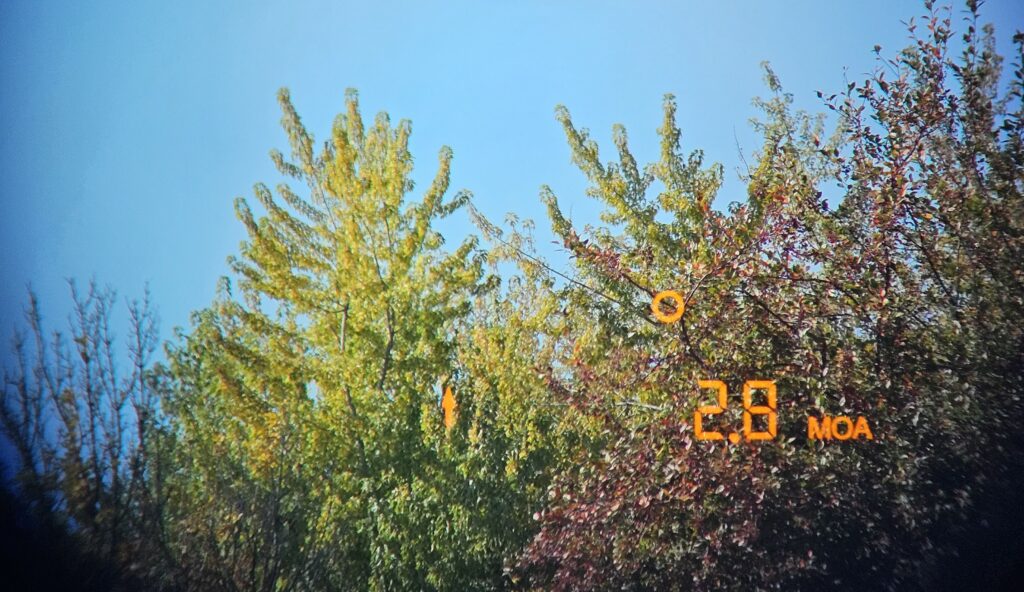
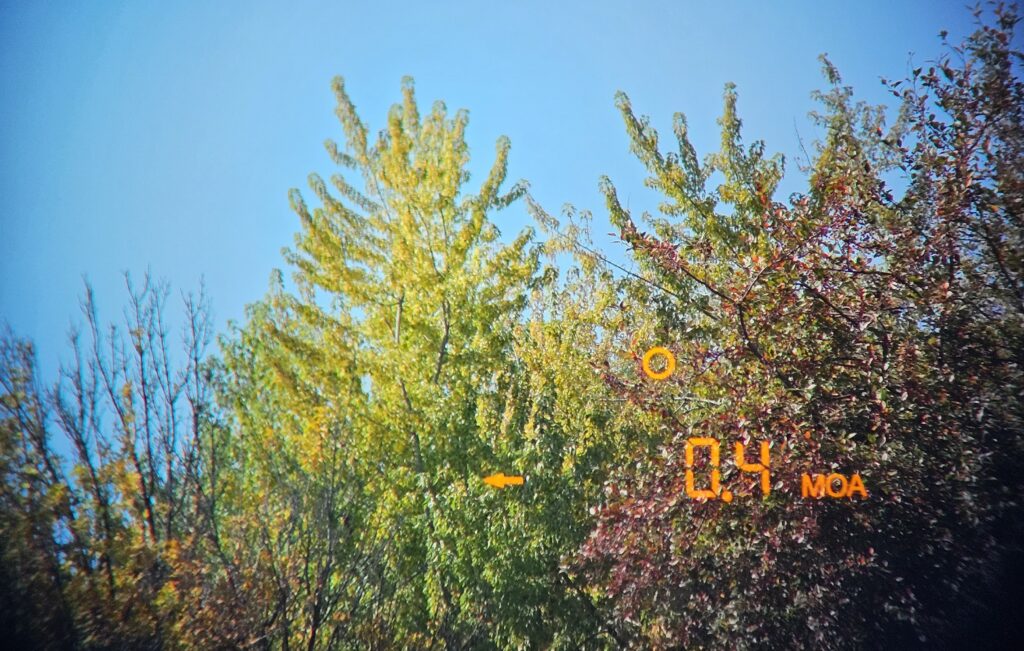
One limitation to note with Applied Ballistics Ultralight is that it will not provide a ballistic solution past 800 yards. For most of us that is a non-issue, but if you have the skill and need to shoot beyond 800 yards, you may want to consider a different rangefinder binocular.
It still gives the data a long range hunter will need (out to 800 yards) when in BDX mode, and the Sig Kilo 6K allows you to use either the onboard sensors or link the Kilo 6K to an external device like a Kestrel 5700 to generate your ballistic solution.
ANGLE-MODIFIED & lINE OF SIGHT MODE
If you are not looking for the Kilo 6K to provide a ballistic solution, an alternative mode you can select is the Angle-Modified Range (AMR). In this mode there is no ballistic solution data and the display becomes extremely clean and free of clutter. You simply have the AMR and that is it. This is the mode you want to use if you are the person who likes to use your own ballistic solution or printed range card.
Another option these binoculars provide is the line of sight (LOS) range mode. If you select the mode, the display will look similar to AMR mode and only the LOS range will be displayed (no ballistic solution).
It is nice that Sig Sauer does not lock you into using the BDX Ultralight mode since it contains information that not everyone will use. They built the Sig Kilo 6K to meet a lot of different preferences.
ARCHERY MODE
Sig Sauer did not forget about the archery hunters either. Like the the Sig Kilo 10K, archery was not the primary driving force behind the design of the Kilo 6K, but I love that Sig Sauer listened to its customers who wanted to be able to use this optic not only for long range shooting but also for their archery hunts. When the Sig Kilo 6K is put in Archery Mode, the display is simplified drastically and you are just given the angle-modified range as your primary yardage and the angle (in degrees) of the object you are ranging.

Sig Sauer takes it a step further and allows you to input your arrow’s speed to further ensure that the angle-compensated range it it giving you is spot on. If you bowhunt, you know that being off even a few yards can make a difference, depending on the shot. This is EXACTLY the setup I want when I am archery hunting as most of the time I just want the angle-modified range for the shot I am about to take.
SCANNING
Scanning with the Sig Kilo 6K is extremely fast and is about as close to instant feedback as you can get. Holding the “range” button down while panning the rangefinder across a hillside produces 4+ ranges per second, making it super easy to confirm your range and be sure of the yardage prior to making the shot. This is especially helpful if there is a lot of brush or other objects around your intended target and you are not quite sure if the range you got is the animal or an adjacent tree.
BALLISTICS iNTEGRATION
I love how simple the Sig Kilo 6K menu is and how easy it is to navigate and change in the field if needed. It is even easier to set up than the Kilo 10K and it is intuitive and easy to connect to the Sig Sauer App. You also have the ability to initiate settings changes through the app, then sync the app with the Kilo 6K.
Setting up ballistic profiles is extremely easy, and with the Sig Kilo 6K featuring Applied Ballistics Ultralight, you can have up to 25 stored for use with your Kilo 6K rangefinder binoculars. You can either select from one of 8 ballistic groups if you find one that matches the load you are shooting or you can build your own custom profile. Personally, I always build my own custom profile to make sure the ballistic solution is as accurate as possible.
To set up a new custom ballistic profile, select “Custom Profiles” from the main menu in the app then “New Profile”. Below you can see how I have created profiles for a few of my guns already. In my screenshot, profile 4 is “Active” as you can see that the “BDX” icon is illuminated next to that profile. You can press the circle under the “Active” column to make any of the profiles “Active” when you sync.
If we press profile 4, we then see all the data that we can input/change which will affect the ballistic solution that is produced by the Kilo 6K. You can select from the bullet library or input the data manually. If you use the bullet library, I would suggest looking up and confirming all pre-filled data to make sure it is accurate as this will directly affect your ballistic solution. Call me paranoid, but I am a “trust but verify” kind of person.
Once you have inserted all your custom profile data, changed any settings you want, and have the gun profile selected that you want to be active, press “Sync” and all the data that you put in the app will be pushed to your Kilo 6K. As always, spend time at the range to verify that the solution is accurate. Your specific gun/ammo may have a slightly different solution that you need to calibrate for, and you want to know that before you hit the mountains or the match starts.
What I liked: Sig Kilo 6K Rangefinder Binoculars Review
RANGEFINDING CAPABILITIES AND FEATURES
There are not many, if any, compact rangefinding binoculars out there that offer the incredible rangefinder performance that the Sig Kilo 6K does. While I have been plenty impressed with others I have tested like the Zeiss Victory RF and Swarovski EL Range TA, from the standpoint of rangefinder performance, the Sig Kilo 6K simply offers more. These binoculars routinely returned 3,200+ yard ranges offhand and occasionally hit out to 5,000 yards, which is incredible for a 32mm rangefinder binocular. That rangefinding performance, combined with the ballistic data and onboard sensors, make this unit a great lightweight and compact option for just about every pursuit.
BUTTONS
Crisp, clean feeling buttons with a very positive and defined click make the Sig Kilo 6K easy to use and easy to find the run/mode buttons when needed. Menu navigation is straight-forward, fast, and extremely simple to change at home or in the field. Others I have used can be tricky to change on the fly but not the Sig Kilo 6K.
DISPLAY & MODES
I love the adaptive OLED display. It is super crisp, offers a nice fine reticle, and gives you tons of display options for whatever type of hunting or shooting you will be doing. It is designed to operate well for everyone from the long range shooter to the up-close archery hunter, with the display customized for each application. You can have a display cycle through full ballistic data, or you can adjust it to show just the line of sight or angle-compensated range.
HYPERSCAN – SCANNING SPEED
The scan speed of the Sig Kilo 6K is second to none (at least of the rangefinders I have tested). It pushes out a minimum of 4 ranges per second even at extreme distances. It is impressive!
EASE OF USE AND SETUP
Since the Kilo 6K offers so many features, you might expect it to be difficult to set up. However, the exact opposite is true and setup is simple and intuitive. The app and unit are both easy to navigate. Because setting up the unit is an important step in producing accurate ballistic solutions, make sure to take your time and get it set up right. Thankfully you do not have to be an engineer to figure it out.
COMPACT SIZE/LIGHT WEIGHT
The super compact size and light weight of the Sig Kilo 6K make these ideal for the archery hunter, who may not want a full size rangefinder binocular for those up close encounters. The weight is awesome as well at just 26.1 ounces.
TRIPOD-ADAPTABLE
One last thing that seems simple is that Sig designed the Kilo 6K to be tripod adaptable. The threaded bridge accepts an adapter stud, enabling the use of high-end adapters like the Swarovski SLC-TA adapter, the Outdoorsmans binocular adapter, and the Zeiss 1/4 inch tripod adapter. This small item is a big deal to me.
What I Didn’t like: Sig Kilo 6K Compact Rangefinder Binoculars Review
There are always a few thing that seem to pop up that could be better with nearly every pair of binoculars I have ever tested. And while there were not a lot of things that fell in that category for the Kilo 6K, there were a few.
Here are the things I feel are worth noting that I did not love:
PLAY IN THE FOCUS WHEEL
My biggest complaint with the the Sig Kilo 6K rangefinder binoculars is the play in the focus wheel, combined with the wheel being a bit on the stiff side. This was truly disappointing as it was noticeable and took away from the overall feel of the binoculars. Given that the focus wheel is something that you are always using, it sure would be nice to see that play removed.
BLUE TINT
The blue tint was surprisingly far less noticeable in the Sig Kilo 6K than it was in the Kilo 10K. This was a very pleasant surprise. Even so, the blue tint that was there did take away from the optical performance and was not ideal.
CYCLING DISPLAY (in BDX mode)
One of the things that I loved about the big brother Sig Kilo 10K ABS was that the display provides the line of sight range, adjusted range, and ballistic solution simultaneously without needing to cycle through them. Because the Sig Kilo 6K is equipped with Applied Ballistics Ultralight to generate ballistic solutions, and has a different display setup, it cycles through your elevation and windage corrections. It is not ideal to have to wait for each of those to display. I do like, though, that when in “AMR” and “Archery” modes the Kilo 6K does NOT cycle through the line of sight and angle-compensated range; it displays the angle-compensated range only for simplicity.
Sig Kilo 6K Compact Review Conclusion
After putting the Sig Kilo 6K Compact rangefinder binoculars through a number of different tests and uses, our team concluded that while the Kilo 6K has a few things that are less than ideal, they offer an incredible value and extremely good performance. Good optical performance, amazing rangefinder function, and extreme versatility make this a great choice if you like to pick up the bow during early fall, then grab the rifle for some time in the woods. They can even get the job done on long range hunting if you plan to keep shots inside 800 yards. The Sig Kilo 6K is a fantastic all around compact rangefinding binocular at a very good price.
Subscribe to Backwoods Pursuit to get Your FREE Backcountry Gear Worksheet!!!
Dial in your gear list, calculate your pack weight, and lighten up your pack with this handy tool!

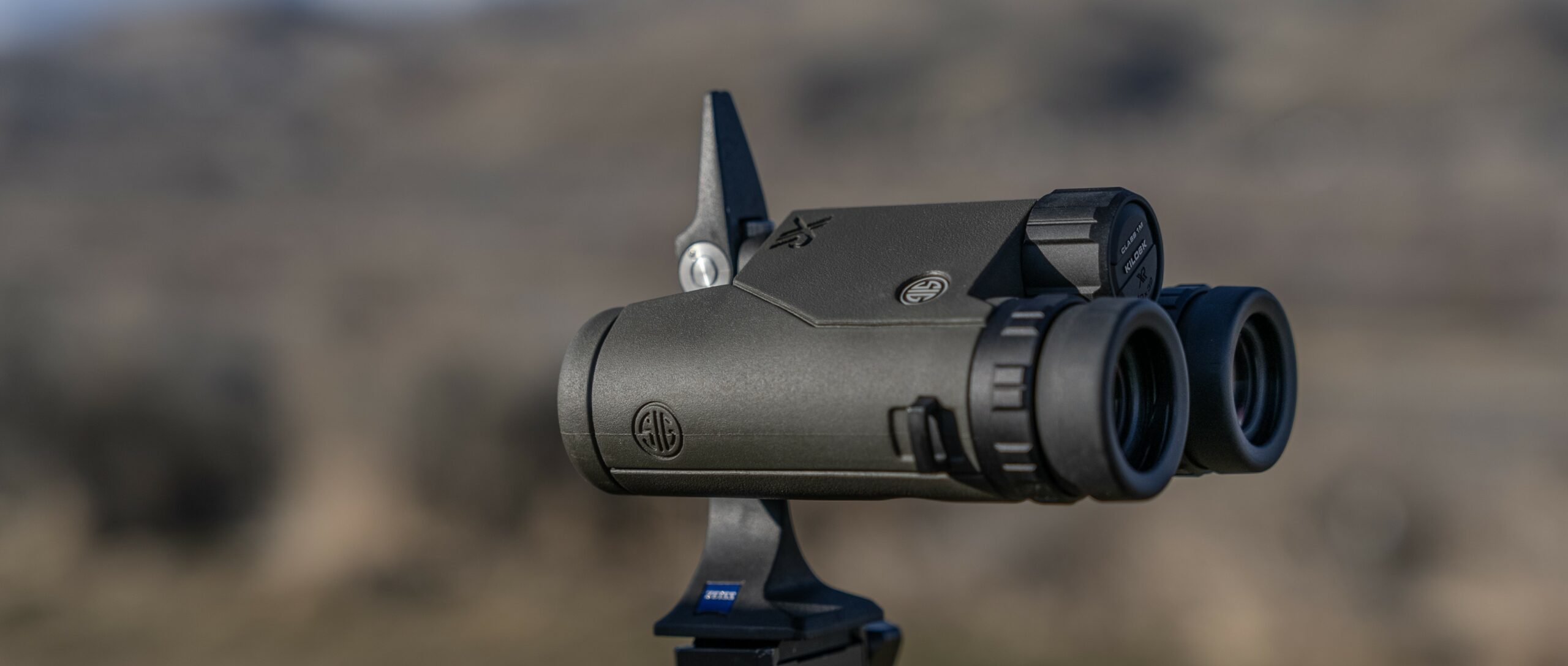
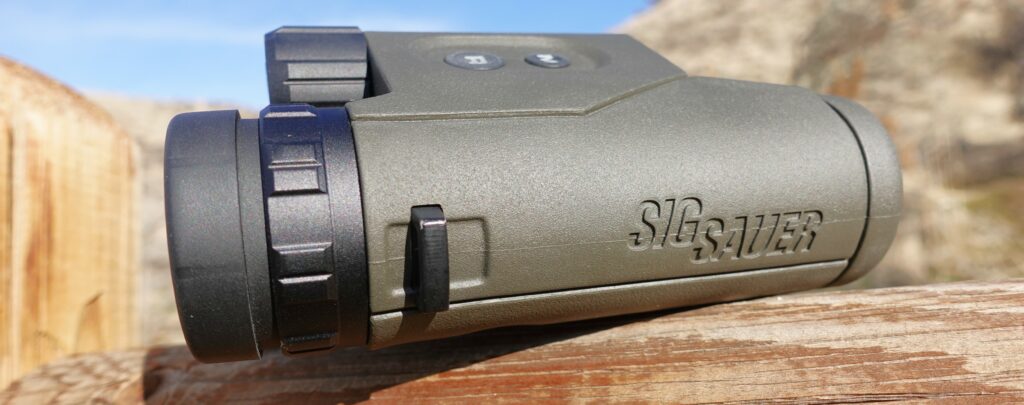

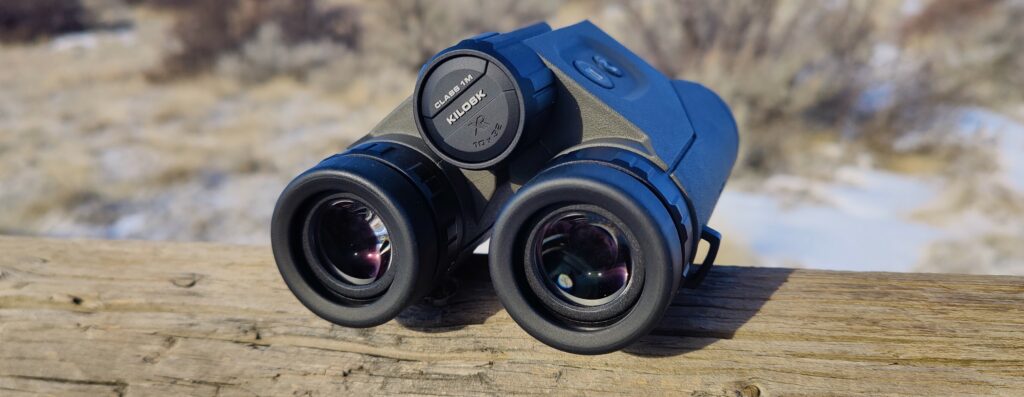


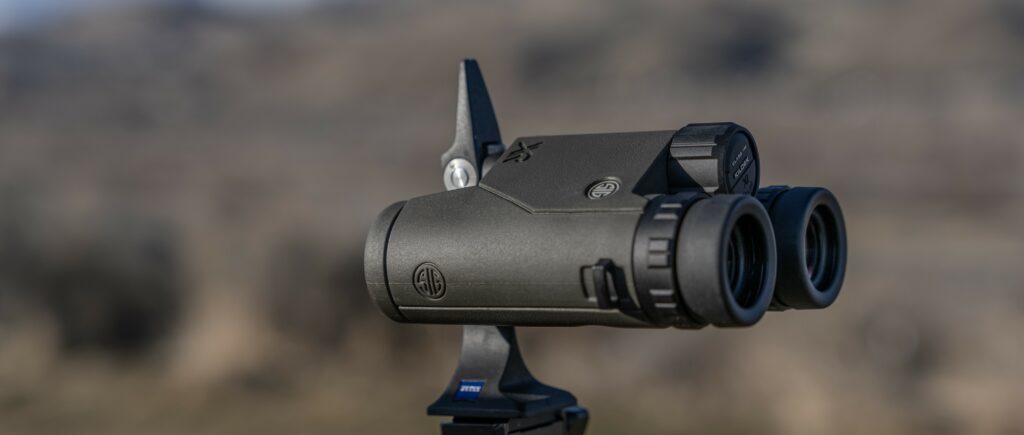



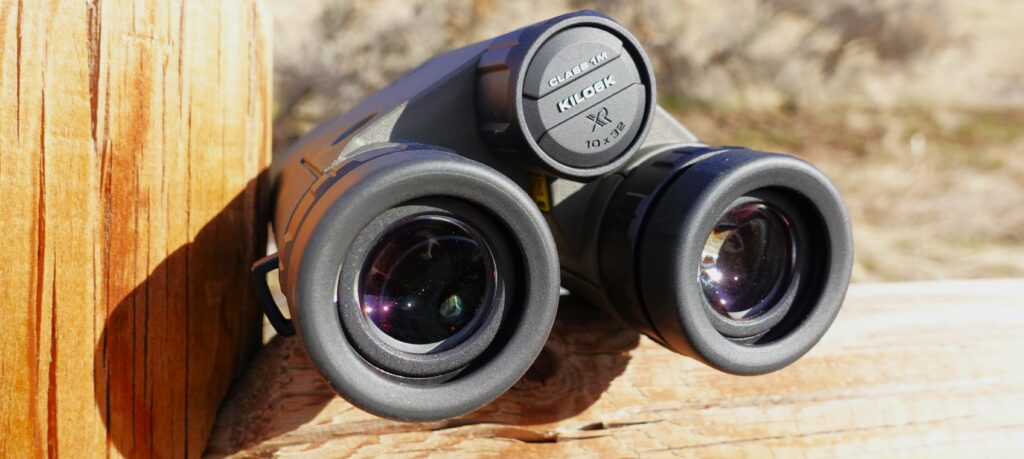
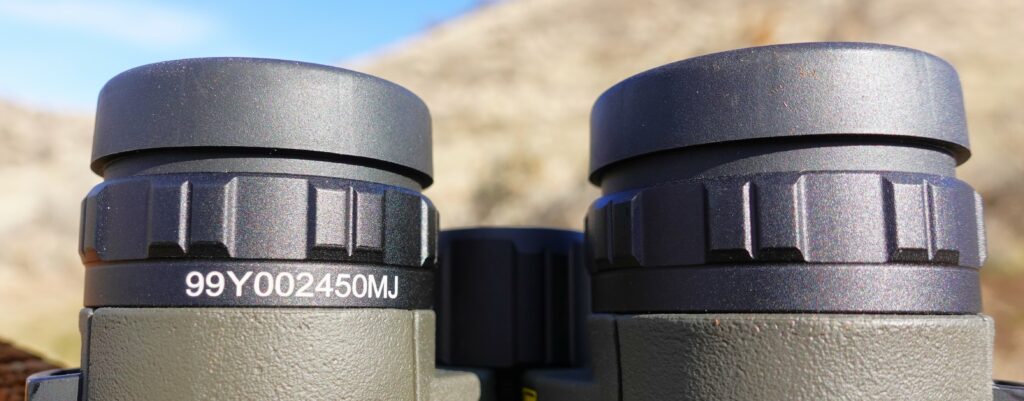

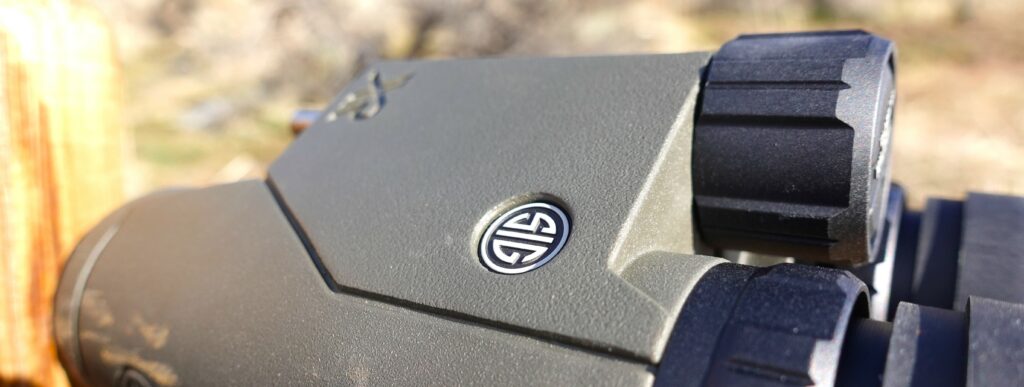
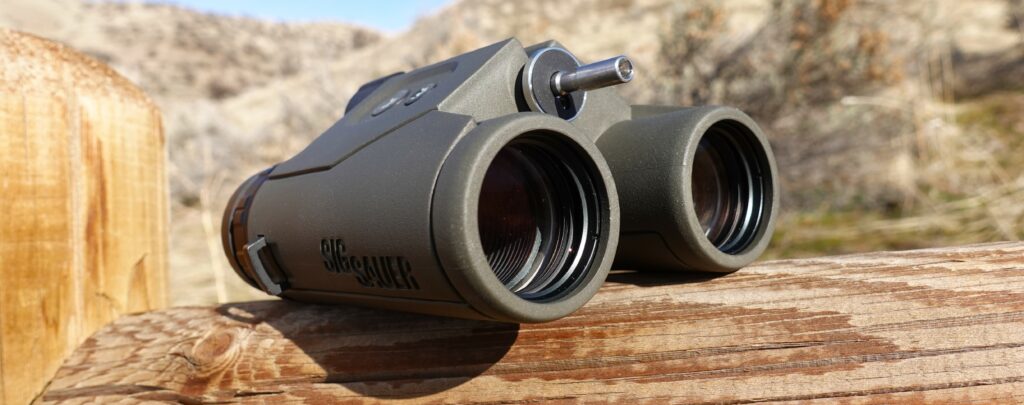

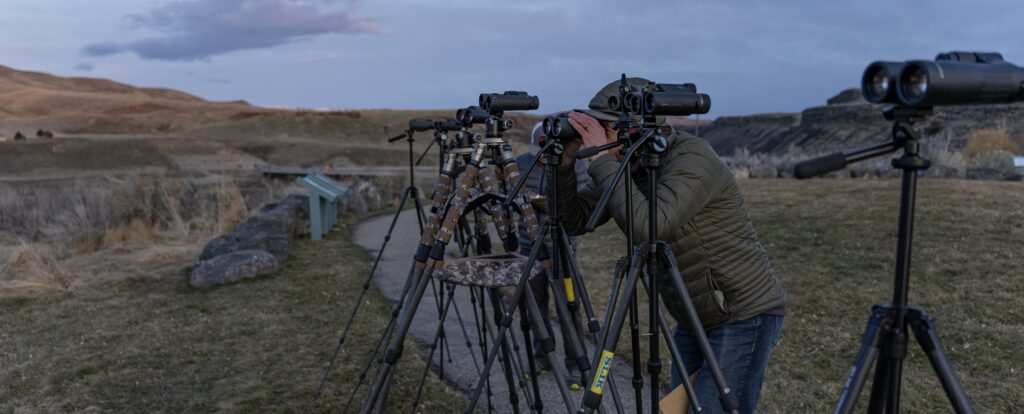
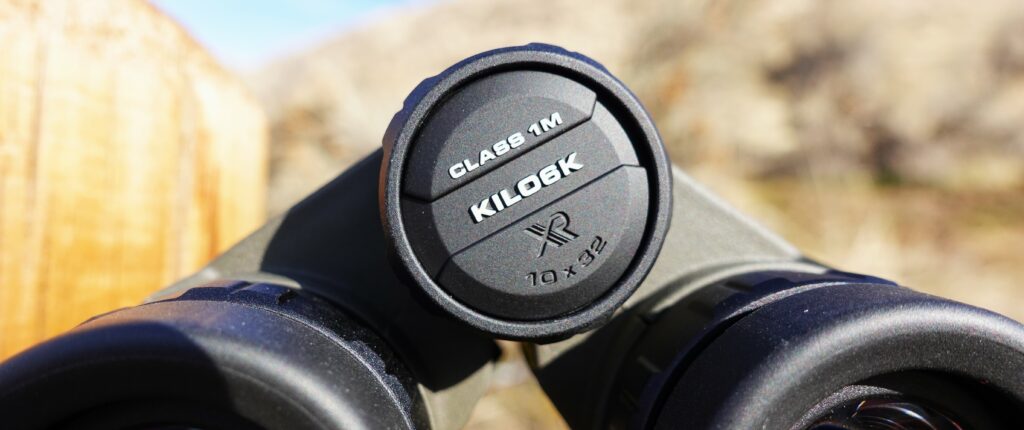
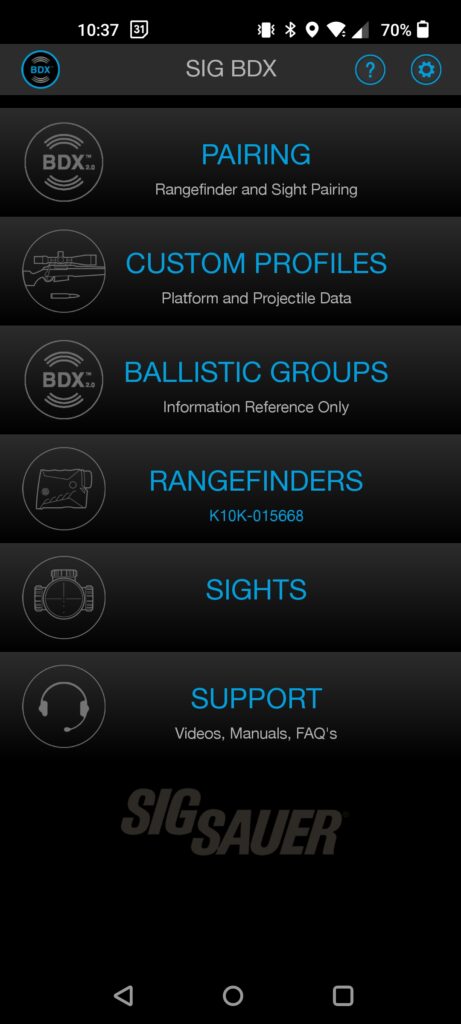
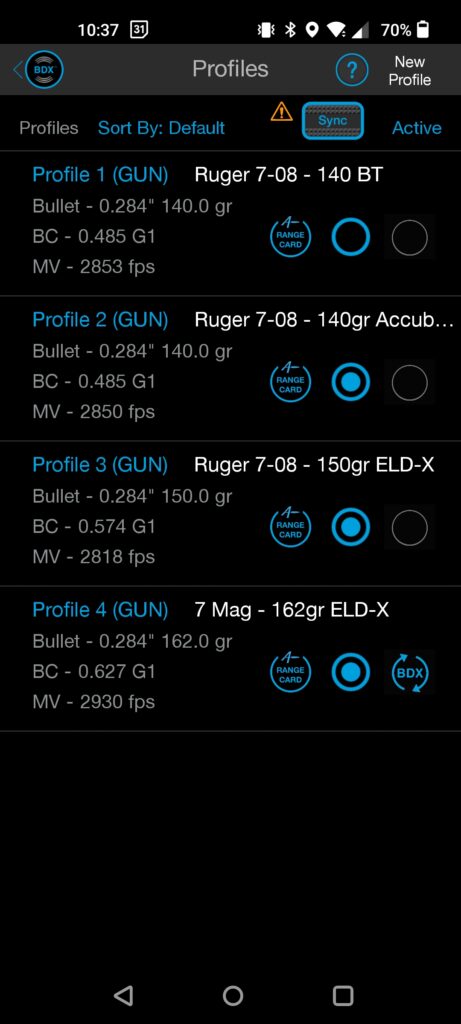
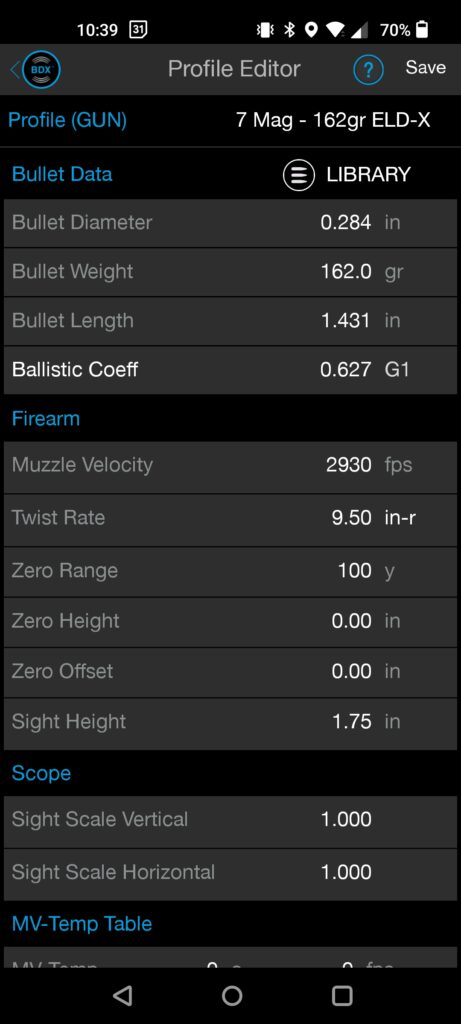
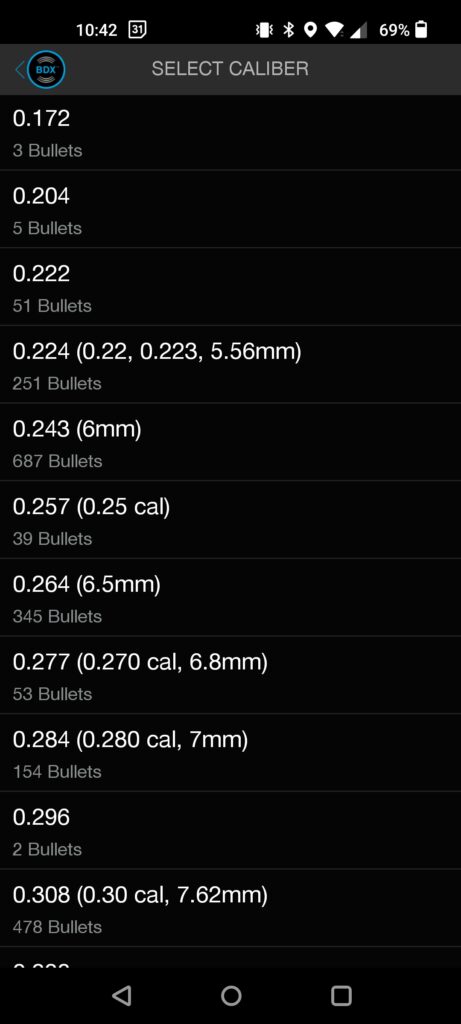
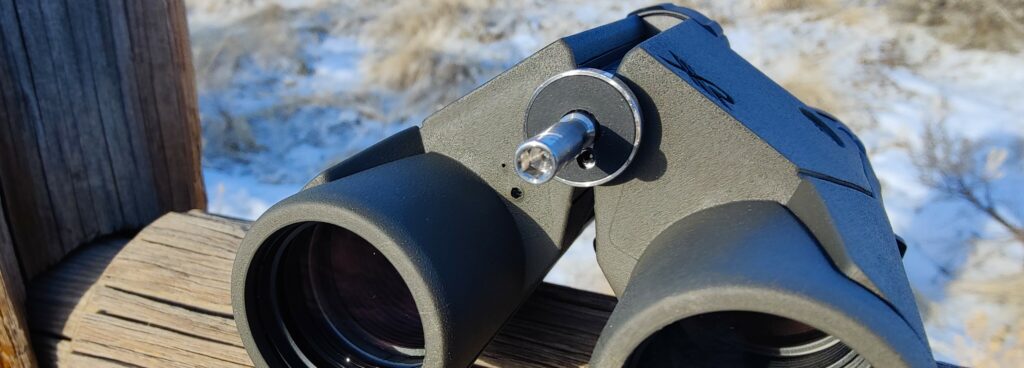

Would like to see a review of big 56mm binoculars, especially the 18×56 Maven and Vortex Razor UHD
Hey there, Mike! That is something that is on the list of reviews to put together. Thanks for reading!